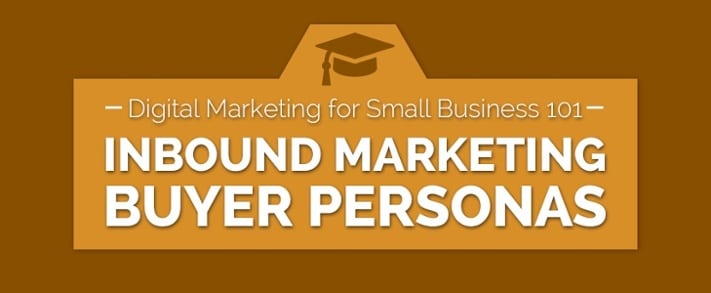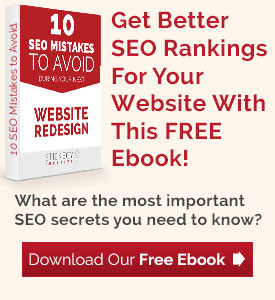25 July 2016
Digital Marketing for Small Business 101: Inbound Marketing Buyer Personas
Want to turn your website from a liability to an asset? Great! We’re going to discuss Digital Marketing for Small Business all week this week – specifically Inbound Marketing, and how it can help your business.

Inbound marketing is a marketing framework that can be summarized as this:
The best way to your ideal customer is by providing the right content at the right time.
It’s a powerful framework that is built around how people are shopping for good and services on the internet. Tools like Hubspot use it as the method to put your brand’s message in front of your customers with optimized content that speaks directly do them exactly when they’re most ready to hear it. It differs from advertising in that instead of looking for your customer to engage them, you find out what they’re looking for and engage them there.
To leverage this framework, you’ll need to understand the main three parts of the inbound strategy:
- Ideal Customer, or Buyer’s Persona
- Targeted Content, blog posts, landing pages, Ebooks
- Correct Timing, or The Buyer’s Journey
How do you go about doing that? Watch this video where we focus on Part 1: Buyer Personas.
Interested in more about buyer personas and how they can help focus your business’s marketing? Schedule a FREE 30 minute live demo to find out.
A buyer’s persona is a document that details our ideal customer that we’re looking to market to. It has notes on their behaviors and demographics, as well as all of the information we know about them and what they’re looking for.
When doing inbound marketing, think of them as the beacon that guides everything you do.
Step 1: Who is your ideal customer?
The first thing you’ll want to do when starting a Buyer Persona is think back on all of your best customers. The ones that were 100% engaged with what you were providing and were the absolute best fit for your business. When you think back to your company’s customers and go, “I wish they were all like this” – THAT is your ideal customer.
This ideal customer is who we primarily want to market to. They’re the kinds of people or businesses who will be most engaged and excited by your offers, and willing to purchase your solution.
Step 2: What are their challenges?
Now that you have your ideal customer, think about what challenges they had when they first came to you. What did they say bought them to your front door? What pain points did they specify when they spoke to you?
These challenges are important, because they allow you to best frame your solutions to them. Your customer wants to know that you identify with them and empathize with their problems.
Step 3: What are their goals?
You have your ideal customer, and their challenges, now it’s time to identify their goals. Not just their goals that directly relate with your business, but the goals for their business or personal lives in general. Do they want more passive income? To enrich their lives? Are they looking to free up more time to be with their family? Grow their business and franchise it?
By understanding your ideal customer’s goals, it can better inform how we can better serve them with our services. It’s easy to say, “I provide accounting services”, but to your customer, what they want to hear is, “I solve your accounting problems so you can focus on running your business.”
Quick Tips:
- When developing your buyer’s persona, it can help if you give them a name and an image to personalize and humanize them
- If you have the same kind of ideal customer, but they usually have 2 different goals, it may be worth it to split them into separate personas
- These are ongoing and living documents. The more information and data we can get for our personas, the better we can understand them.
- Always leave an area for miscellaneous notes. These can be used to detail the persona’s background, age/income/education, any notes that can help you better understand your audience.
By putting all three of these together you can develop a pretty good start to a buyer’s persona. It can help focus your inbound efforts by giving you that beacon to push towards.
Understanding digital marketing for small businesses can be tricky, that’s why later this week we’ll be going over the other two parts of Inbound Marketing: Content and The Buyer’s Journey. Then you’ll see how we can put your buyer’s persona into practice.
Continue on to part 2:
Digital Marketing for Small Business 101: Inbound Marketing Targeted Content
Interested in more about buyer personas and how they can help focus your business’s marketing? Schedule a FREE 30 minute live demo to find out.

